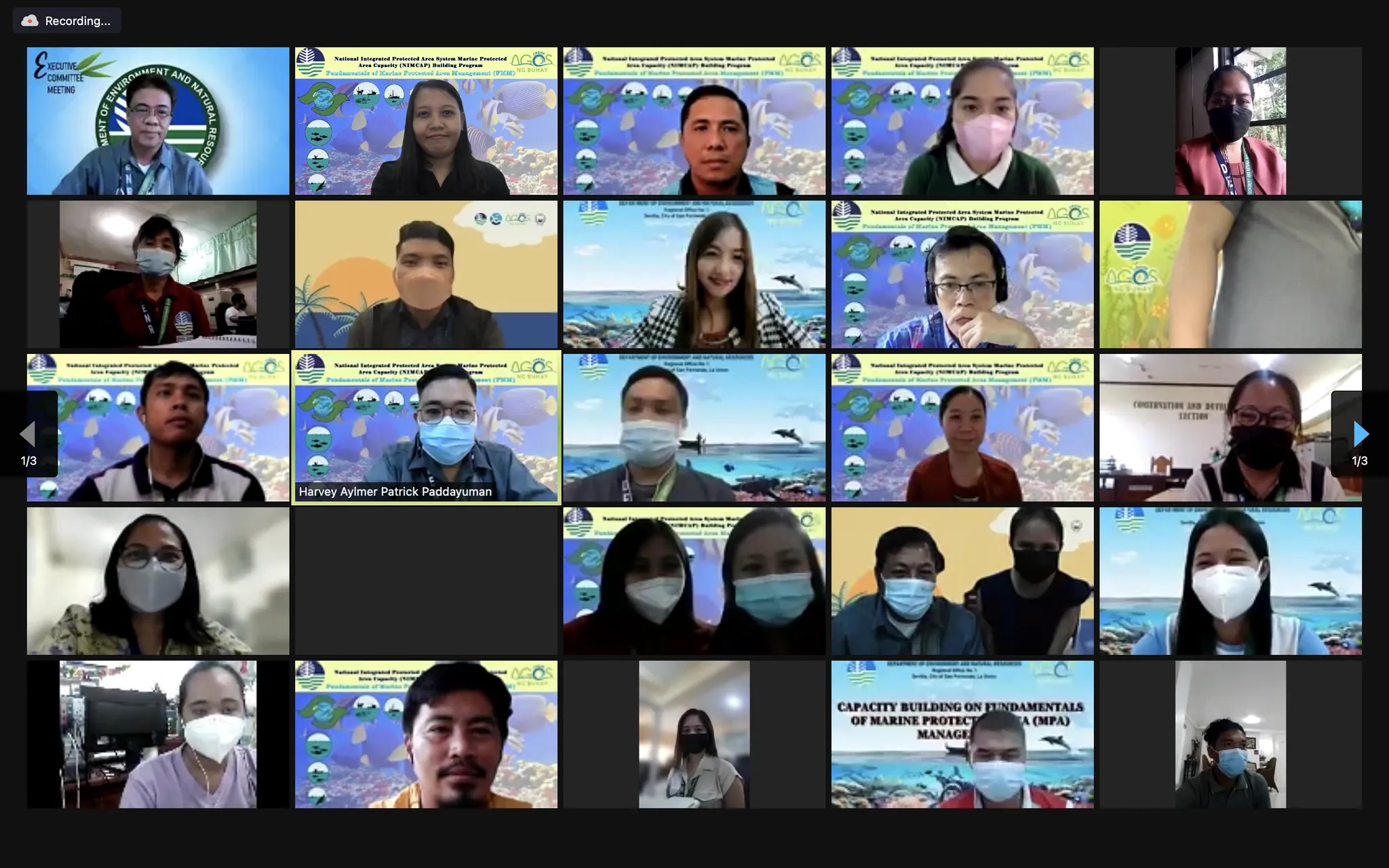
TOWARDS BETTER MPAs. Marine protected areas (MPAs) in the Cagayan Valley will now be managed more effectively following the eight-day National Integrated Protected Areas System (NIPAS) MPA Capacity Building held recently thru open distance learning.
Geared towards intensifying and strengthening the capacities of the Coastal and Marine Ecosystems Management Program (CMEMP) implementers, the 24 learners from Region 2 along with Regions 1 and 11, participated in the discussions focused on the Marine Environment and Ocean Processes, and Fundamentals of MPA Management.
In their welcome remarks, Enrique Pasion and Myrna Erlinda Arbiol, conservation and development division chiefs of Regions 2 and 11, respectively, encouraged everyone to optimize the learning time and be open to gaining new ideas that would help them improve their skills in MPA management.
“The coastal and marine ecosystems, especially the MPA, is an exciting facet to be part of. Working in this kind of environment is learning by doing and every knowledge and skill to be gained from the training is applicable throughout your work as MPA managers,” For. Pasion said.
The national mentors from all over the Philippines discussed Oceanographic Processes, Marine Zone Characteristics and Adaptations, Watersheds and Connectivity to Coastal Habitats, Coastal Habitats, Issues Affecting Watershed Function and Coastal and Marine Ecosystem Health, Ecology of Marine Invertebrates, Linkages to People and Community, Biology of Marine Fish, Marine Reserves and Spillover, Introduction to MPAs, Review on the Marine Ecosystems, Management Approaches, Mandates for NIPAS MPAs, Developing Goals and Objectives and Management Strategies, Sustainable Fisheries, Understanding Climate Change, and Enforcement, Regulations and Jurisdiction.
Moreover, to assess their understanding on the topics discussed, a series of group exercises and workshops were undertaken by the participants which include development of specific, measureable, attainable, realistic and time-bound goals and objectives; analysis of approaches; threat identification and prioritization; formulation of management planning model; and identification of management actions and strategies.
Biodiversity Management Bureau-Coastal and Marine Division Chief Armida Andres said, “We look forward to seeing the same participants take-up the rest of the modules in pursuit of a healthier coastal and marine ecosystem,” as she emphasized its benefits to the community.
She also shared that during the conference with the National Oceanic and Atmospheric Administration, one of the executives commended the Philippines for being a star performer in terms of institutionalizing marine-related strategies. #
- Details
- Parent Category: News & Events
- Category: Photo Releases
- Published: 24 November 2021
- Hits: 851